News
The Maldives – not just Mantas!
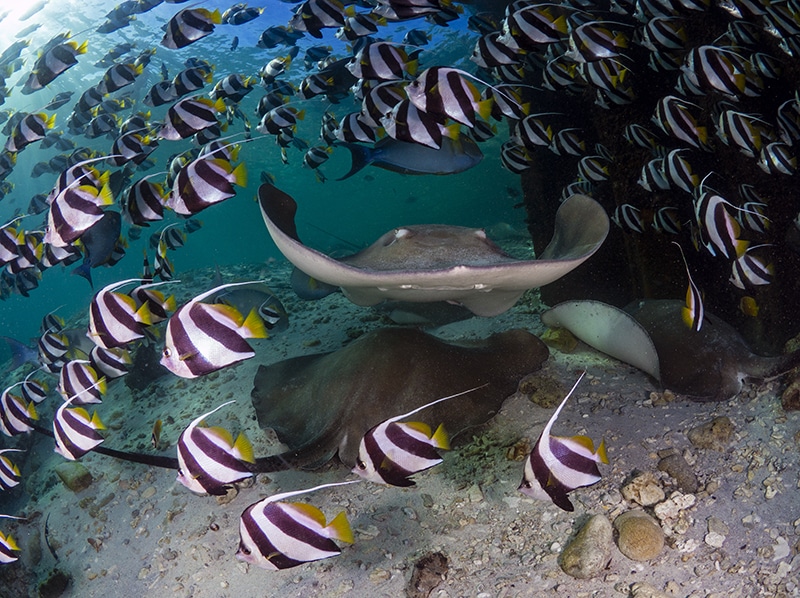
Hopefully by now you have read my previous blog – “Manta Madness in the Maldives”. If not then you can find the article here.
The Maldives is truly Manta heaven and reason enough for anyone to book a dive holiday there. But what about all the other wonders that greet you on a dive there? Unfortunately after a pretty severe El Nino a couple of years back the reefs took a bit of a battering and the coral isn’t as healthy as it was when I travelled here back in 2014. You can see where it is starting to recover with areas of amazing reef and hopefully it has time to really blossom again over a greater area.
This, however, didn’t mean that it was void of life underwater, in fact far from it, as schools of blue striped snapper and triggerfish would circle the reefs. There was still a lot of amazing unique marine life that would make an appearance during our dives, and many anemone and clownfish toughing it out amongst the reefs, providing beautiful splashes of colour.
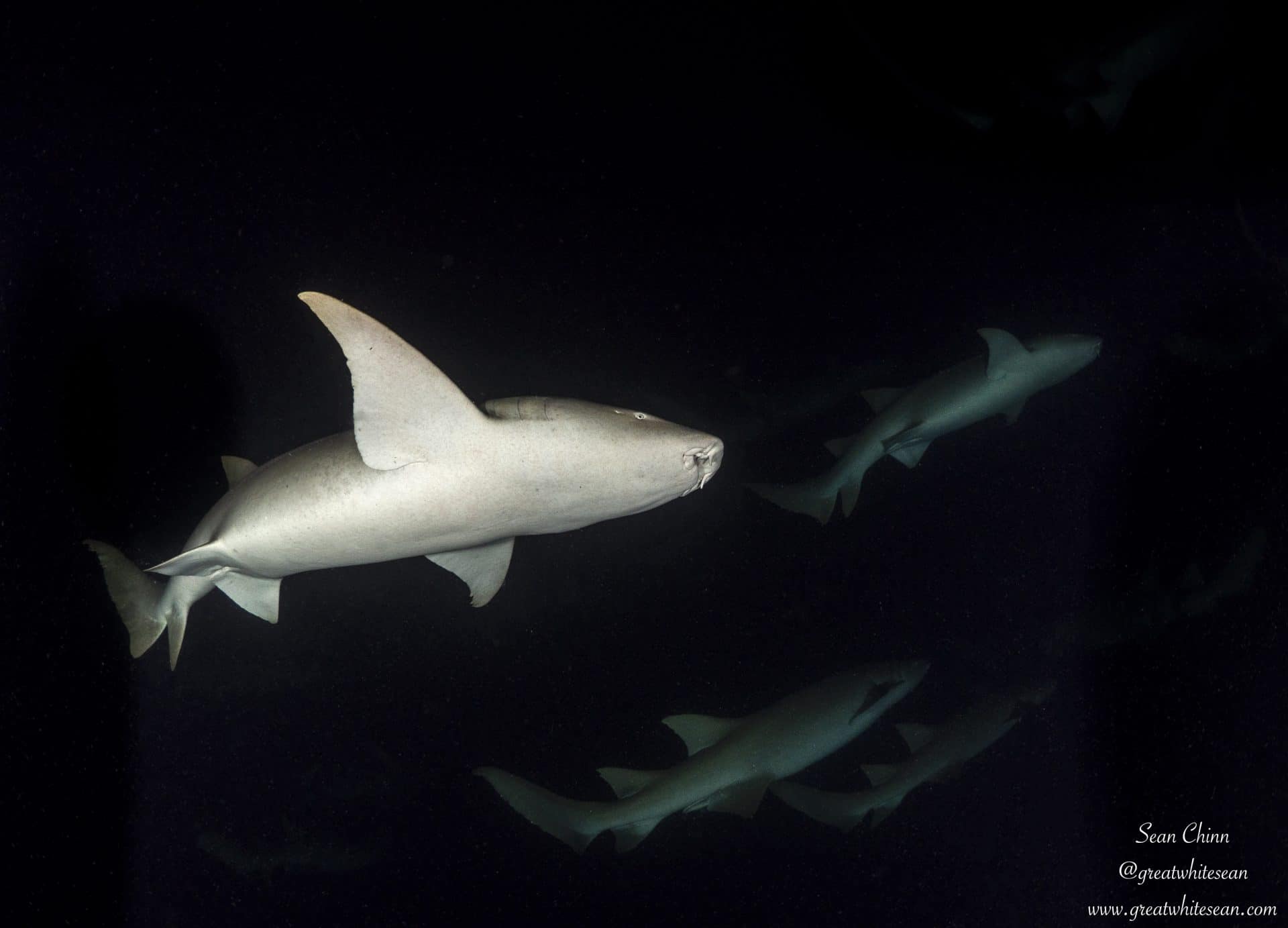
One of the major highlights for our group was on our first diving day when we dived the famous night dive at Alimatha Jetty with the Nurse Sharks and Stingrays. This is a shallow dive on the house reef of Alimatha Resort, surrounded by friendly Nurse Sharks and Stingrays. For a lot of our group, it was a completely new experience as many had only done UK diving in quarries. To see the buzz it created amongst the boat after the dive was a great feeling knowing I helped to organise the trip.
I’d done this dive four years ago and it was incredible then, but this time it completely blew me away as I moved away from the reef and was greeted with a wall of sharks that was at least 30 strong. Something I wasn’t as fortunate to see four years previously. It was funny watching some video back of the dive and you can here me shouting with joy underwater as the wall of sharks come in view.
We did a number of channel dives where we were able to watch Grey Reef Sharks cruising up and down the channel. It is always exciting to see a healthy shark population as you know that although the coral may be in recovery mode, at least the reef life is supporting them. Again for many of my group it was their first time diving with sharks and it reminded me of that amazing buzz the first time you see a shark underwater. I mentioned in length on my previous blog about my best dive of the trip at Moofushi Corner. I can’t reiterate enough how good this dive was and how special it was to see the school of Eagle Rays. The cruising Grey Reef Sharks and Whitetip Reef Sharks just added to what was a truly incredible dive.
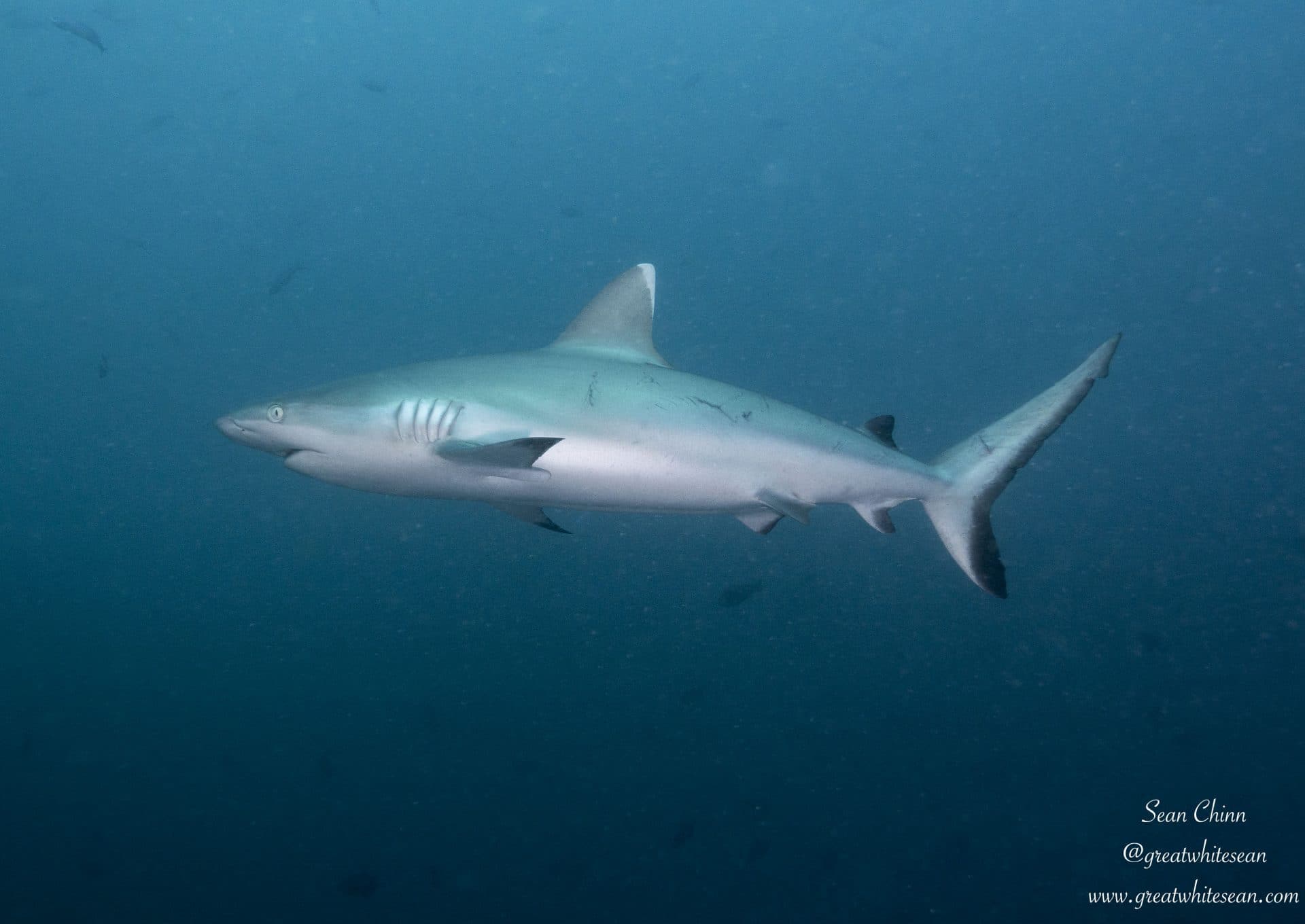
Most of our dive boat also got to see the biggest fish in the ocean – the Whale Shark. My dive group was a little further ahead when we heard the commotion underwater on its arrival. There was a mad rush to see it but unfortunately for a few of us stuck behind other groups it was a little too far. We were kicking like mad and I certainly needed a rest once we realised the hope had gone. I’m still debating with myself whether I saw the tail end before it swam off or it was my eyes deceiving me in the hope I could join in the enjoyment of the rest of the boat’s encounter. I’m really happy for them though as it was their first encounter with this majestic animal.
It’s funny, as for me personally, one of the major highlights with marine life interaction on the trip were the Octopus encounters where they were out of the reef and in full view. One dive in particular was starting to become a bit forgetful as we waited and circled a cleaning station in the hope of a Manta turning up. As the time went by, I was thinking surely something could happen to make this dive at least a little worthwhile. Then, out the corner of my eye, I spotted this Octopus going for a stroll along the reef. It was a decent size, and watching it crawl along the reef using it’s tentacles was amazing to witness.
As the week continued, we had more Octopus encounters and finished up with two mating on the second from last dive of the trip. I think everyone has a little soft spot for Octopus, especially when you get lucky and see them cruising the reef and watch the unusual way they move along.

The dives continued to deliver throughout the week as we were able to get right next to Hawksbill Turtles as they grazed on the reef, completely unmoved by our presence. Marbled Rays were particularly friendly on numerous dives, and weren’t shy in swimming directly at you. Playing chicken with a Ray was rather interesting and I found myself losing all the time against these bold and curious Rays.
Even more so on the night dive at Maaya Thila, as we watched the Rays hunt alongside Moray Eels, Lionfish, Giant Trevally and a lone Whitetip Reef Shark. I remember having one view where I could see Trevally, a Marbled Ray, Moray Eel, Stonefish and Whitetip Reef Shark in one small area that only required a small turn of my head to see all together. Another memorable dive in the Maldives.
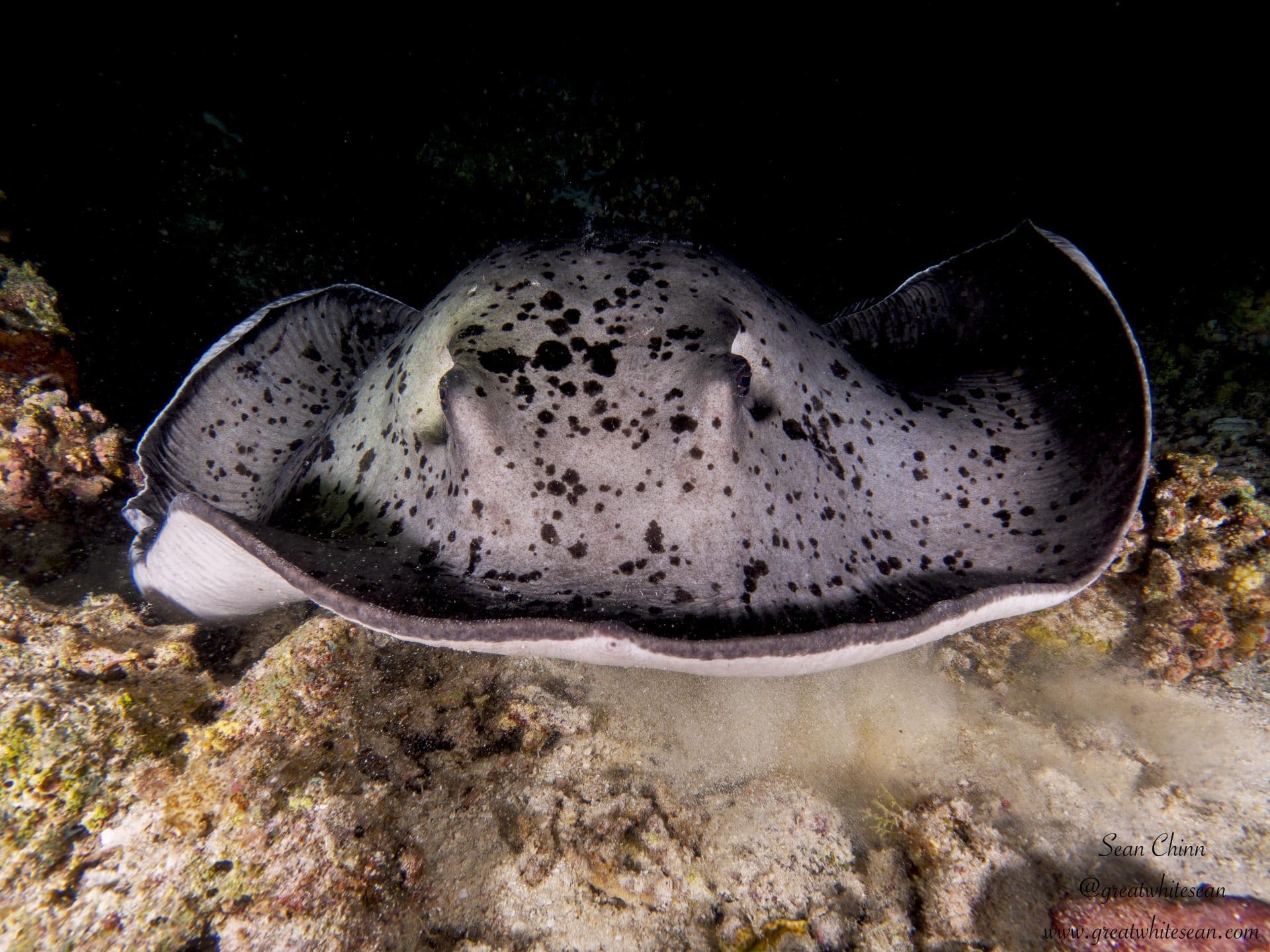
For the macro enthusiasts of the world, there are still possibilities for interesting critter encounters even in the wide angle heaven that is the Maldives. Peacock Mantis Shrimp were particularly frequent sightings throughout the dives and I ended up getting my favourite photo I’ve ever taken of one whilst there. I didn’t use my macro lens much but I was happy with some of the encounters along the way with Blenny’s, Nudibranch, Pipefish and Mantis Shrimp. If you’re really lucky, the guides have also found Harlequin Shrimp and Frogfish at a couple of the dive sites on numerous occasions. Unfortunately I wasn’t one of the lucky ones this time but it all adds to the diversity of a trip to the Maldives.
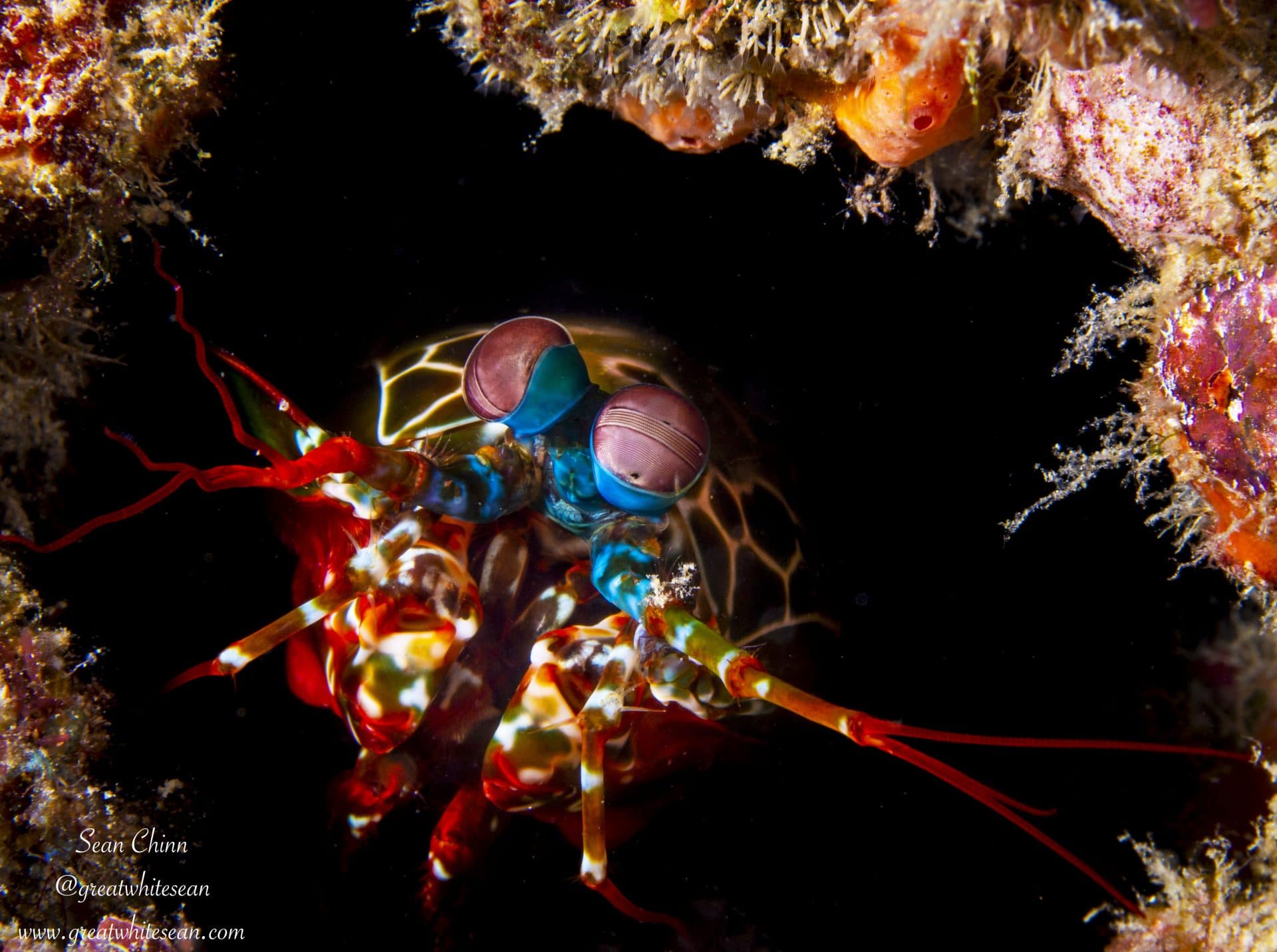
The trip finished with a bang as we got back to Male and entered the water for the famous Fish Tank dive site. On the outside of a working Tuna factory it is like jumping into a wild aquarium as numerous fish species come to feed on the scraps of Tuna discarded from the factory. While the schools of fish are amazing to witness, the large numbers of Stingrays and Moray Eels also at the site is what makes it truly unique. Unfortunately we didn’t get to see the Guitarfish that sometimes frequents the dive site as well.
For any Moray lover, like one of my buddies onboard, it was heaven, as every nook and cranny had a head poking out revealing dagger-like teeth. I found myself at 3-5 metres for pretty much the whole dive, marvelling at the Stingrays as they would make a path through the abundance of fish. The colour was spectacular being so shallow. The saturation slider had been turned up to 100 for this dive. Being so close to the factory, at one point a pool of fish blood was released into the water and it became manic. I decided to back up at this point as I didn’t fancy a face full of fish blood and guts.
A great dive to end the trip, even though it came at a big price. Unfortunately for our boat we were unable to get as lucky as the sister boat, Ocean Sapphire, as they managed to come across a school of around 20 Sperm Whales on their way back to Male. They were around 30 minutes ahead of us and got to snorkel with them, but we weren’t as lucky. It put a little dampener on my trip knowing how close but yet so far I was. It would have really put the icing on what was an already special cake. I can’t dwell too much though as altogether the trip was hugely successful. And missing out on the whales just gives me more reason to return and hope I’m the lucky one next time :).
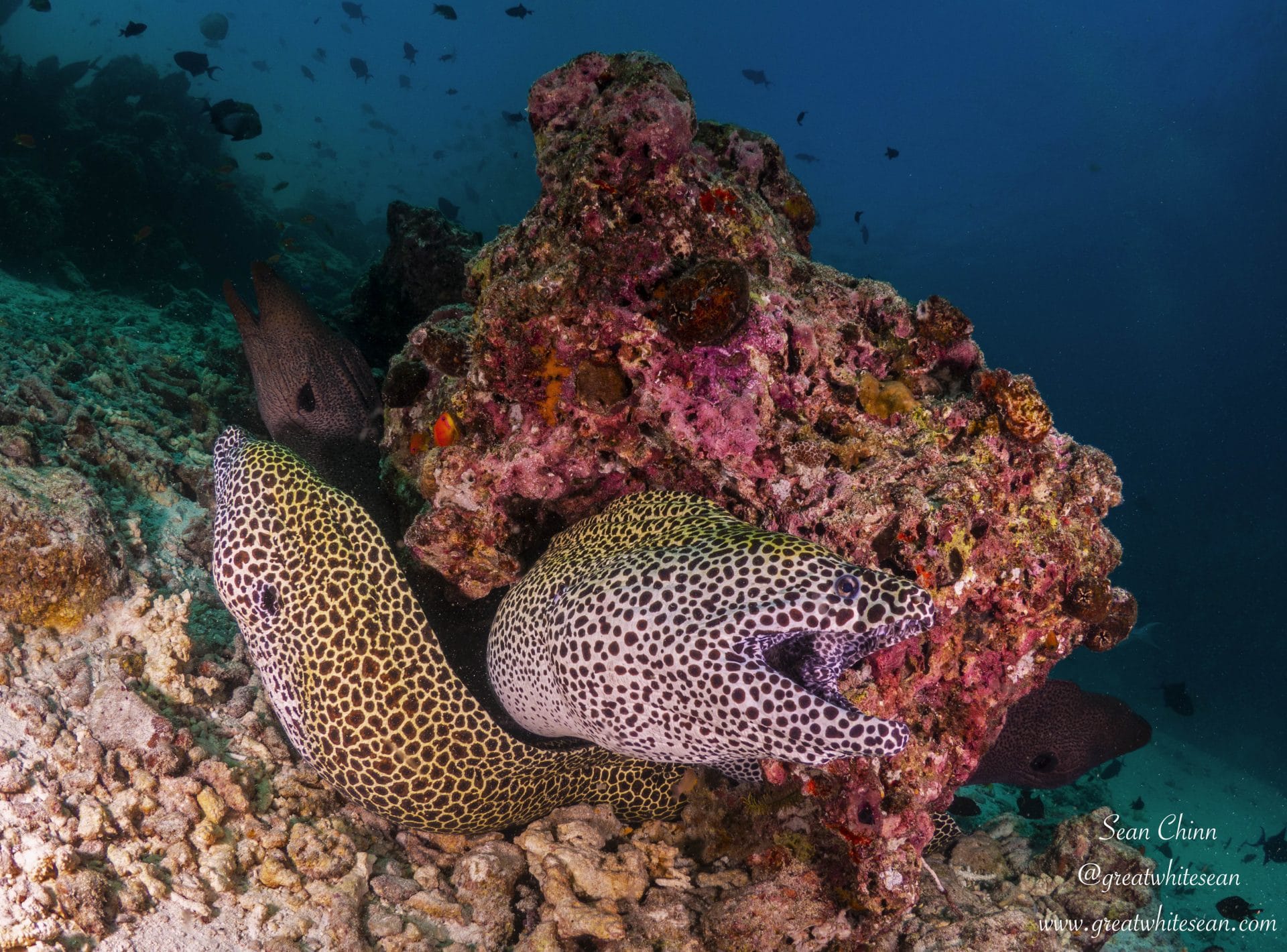
Sean’s trip was organised by The Scuba Place aboard www.topclasscruising.com. For more information and to book call +44 (0)207 644 8252, email reservations@thescubaplace.co.uk or visit www.comedivewithus.co.uk.
If you’d like to join Sean on any of his trips then please check out his trips page at: www.greatwhitesean.com/trips
Blogs
Northern Red Sea Reefs and Wrecks Trip Report, Part 2: Wall to Wall Wrecks

Jake Davies boards Ghazala Explorer for an unforgettable Red Sea diving experience…
The second day’s diving was a day full of wreck diving at Abu Nuhas, which included the Chrisoula K, Carnatic, and Ghiannis D. The first dive of the day was onto the Chrisoula K, also known as the wreck of tiles. The 98m vessel remains largely intact where she was loaded with tiles which can be seen throughout the hold. The stern sits at 26m and the bow just below the surface. One of the highlights of the wreck is heading inside and seeing the workroom where the machinery used for cutting the tiles are perfectly intact. The bow provided some relaxing scenery as the bright sunlight highlighted the colours of the soft coral reef and the many reef fish.

Following breakfast, we then headed to the next wreck, which was the Carnatic. The Carnatic is an 89.9m sail steamer vessel that was built in Britain back in 1862. She ran aground on the reef back in 1869 and remains at 27m. At the time, she was carrying a range of items, including 40,000 sterling in gold. An impressive wreck where much of the superstructure remains, and the two large masts lay on the seafloor. The wooden ribs of the hull provide structures for lots of soft corals, and into the stern section, the light beams through, bouncing off the large shoals of glass fish that can be found using the structure as shelter from the larger predators that are found outside of the wreck.

The final wreck at Abu Nuhas was the Ghiannis D, originally called ‘Shoyo Maru,’ which was 99.5m long and built in Japan back in 1969 before becoming a Greek-registered cargo ship in 1980. The ship then ran aground on the reef on April 19th, 1983, and now sits at the bottom at a depth of 27m. Heading down the line, the stern of the ship remains in good condition compared to the rest of the hull. The highlight of the wreck, though, is heading into the stern section and down the flights of stairs to enter the engine room, which remains in good condition and is definitely worth exploring. After exploring the interior section of the ship, we then headed over to see the rest of the superstructure, where it’s particularly interesting to see the large table corals that have grown at the bow relatively quickly considering the date the ship sank. After surfacing and enjoying some afternoon snacks, we made sure everything was strapped down and secured as we would be heading north and crossing the Gulf of Suez, where the winds were still creating plenty of chop.

The next morning, it was a short hop to Ras Mohammed Nature Reserve for the next couple of days of diving. The 6am wake-up call came along with the briefing for the first site we would be diving, which was Shark & Yolanda. The low current conditions allowed us to start the dive at Anemone City, where we would drift along the steep, coral-filled wall. These dives involved drifts, as mooring in Ras Mohammed wasn’t allowed to protect the reefs. As a dive site, Shark & Yolanda is well-known and historically had a lot of sharks, but unfortunately not so many in recent years, especially not so early in the season. However, there was always a chance when looking out into the blue.

The gentle drift took us along the steep walls of the site, with plenty of anemone fish to be seen and a huge variety of corals. It wasn’t long into the dive before we were accompanied by a hawksbill turtle, who drifted with us between the two atolls before parting ways. Between the two reefs, the shallow patch with parts of coral heads surrounded by sand provided the chance to see a few blue-spotted stingrays that were mainly resting underneath the corals and are always a pleasure to see. With this being the morning dive, the early sunlight lit up the walls, providing tranquil moments. Looking out into the blue, there was very little to be seen, but a small shoal of batfish shimmering underneath the sunlight was a moment to capture as we watched them swim by as they watched us.

Towards the end of the dive, we stopped at the wreck of the Jolanda where the seafloor was scattered with toilets from the containers it was carrying. This provided a unique site to make a safety stop, which was also accompanied by a large barracuda slowly swimming by, along with a hawksbill turtle calmly swimming over the reef as the sun rays danced in the distance.
For the next dive, we headed north to the Strait of Tiran to explore the reefs situated between Tiran Island and Sharm El Sheik, which were named after the British divers who had found them. We started on Jackson before heading to Gordons Reef, where we also did the night dive. All the atolls at these sites provided stunning, bustling coral reefs close to the surface and steep walls to swim along, which always provided the opportunity to keep an eye out for some of the larger species that can be seen in the blue. Midwater around Jackson Reef was filled with red-toothed triggerfish and shoals of banner fish, which at times were so dense that you couldn’t see into the blue. Moments went by peacefully as we enjoyed the slow drift above the reef, watching these shoals swim around under the mid-afternoon sun.

The night dive at Gordon’s Reef was mainly among the stacks of corals surrounded by sand, which was great to explore under the darkness. After some time circling the corals, we came across what we were really hoping to find, and that was an octopus hunting on the reef. We spent the majority of the dive just watching it crawl among the reef, blending into its changing surroundings through changes in colour and skin texture. It’s always so fascinating and captivating to watch these incredibly intelligent animals, in awe of their ability to carry out these physical changes to perfectly blend into the reef. Before we knew it, it was time to head back to the boat to enjoy a well-deserved tasty dinner prepared by the talented chefs onboard.
Check in for the 3rd and final part of this series from Jake tomorrow!
To find out more about the Northern Red Sea reef and wrecks itineraries aboard Ghazala Explorer, or to book, contact Scuba Travel now:
Email: dive@scubatravel.com
Tel: +44 (0)1483 411590
Photos: Jake Davies / Avalon.Red
Marine Life & Conservation
Double Bubble for Basking Sharks

 The Shark Trust is excited to announce that, for two more days only, all donations, large or small, will be doubled in the Big Give Green Match Fund!
The Shark Trust is excited to announce that, for two more days only, all donations, large or small, will be doubled in the Big Give Green Match Fund!
Donate to Basking in Nature: Sighting Giants
The Shark Trust is hoping to raise £10k which will be doubled to £20k. This will go towards Basking in Nature: Sighting Giants. And they need YOUR help to reach they’re goal.
The Shark Trust’s citizen science project is to monitor and assess basking sharks through sightings; encouraging data collection, community engagement, and promoting nature accessibility. This initiative aims to enhance health and wellbeing by fostering a deeper connection with British Sharks.
Campaign Aims
- Increase citizen science reporting of Basking Sharks and other shark sightings to help inform shark and ray conservation.
- Provide educational talks about the diverse range of sharks and rays in British waters and accessible identification guides!
- Create engaging and fun information panels on how to ID the amazing sharks and rays we have on our doorstep! These can be used on coastal paths around the Southwest. With activities and information on how you can make a difference for sharks and rays!
- Promote mental wellbeing through increasing time in nature and discovering the wonders beneath the waves!
Donate, and double your impact. Click Here
-

 News3 months ago
News3 months agoHone your underwater photography skills with Alphamarine Photography at Red Sea Diving Safari in March
-

 News3 months ago
News3 months agoCapturing Critters in Lembeh Underwater Photography Workshop 2024: Event Roundup
-

 Marine Life & Conservation Blogs2 months ago
Marine Life & Conservation Blogs2 months agoCreature Feature: Swell Sharks
-

 Blogs2 months ago
Blogs2 months agoMurex Resorts: Passport to Paradise!
-

 Blogs2 months ago
Blogs2 months agoDiver Discovering Whale Skeletons Beneath Ice Judged World’s Best Underwater Photograph
-

 Gear Reviews2 months ago
Gear Reviews2 months agoGear Review: Oceanic+ Dive Housing for iPhone
-

 Marine Life & Conservation2 months ago
Marine Life & Conservation2 months agoSave the Manatee Club launches brand new webcams at Silver Springs State Park, Florida
-

 News3 months ago
News3 months agoWorld’s Best Underwater Photographers Unveil Breathtaking Images at World Shootout 2023

















